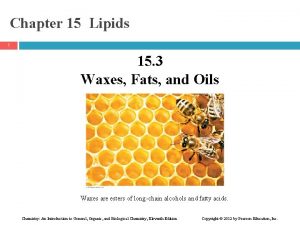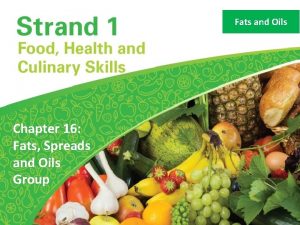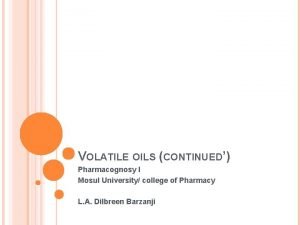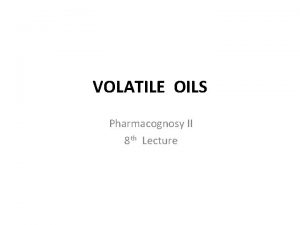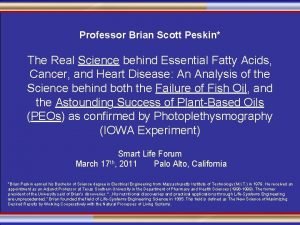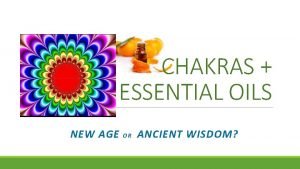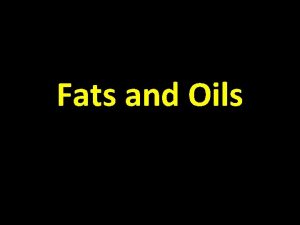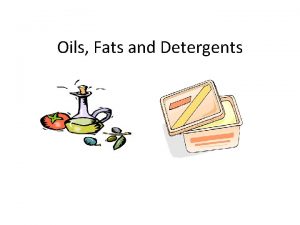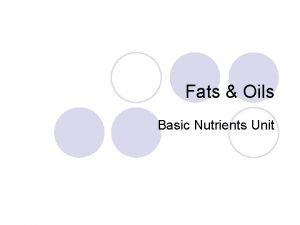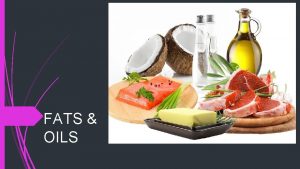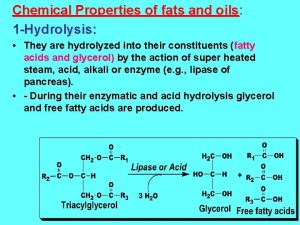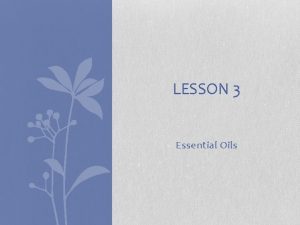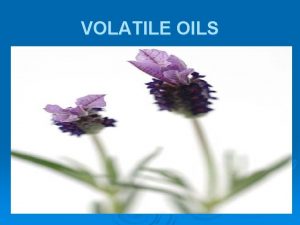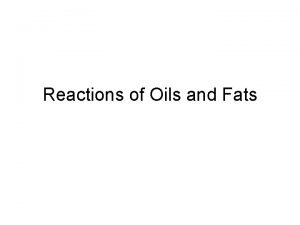Oils and Fats Chemical structure Oils and fats









- Slides: 9

Oils and Fats

Chemical structure. • Oils and fats – important for storing chemical energy in living things. • Oils are liquids – fats are solids. • Made from esters of propane-1, 2, 3, triol (glycerol) + long chain carboxylic acids RCOOH.

Table 11 Common fatty acids

Types of triesters • Triesters (triglycerides) – 3 carboxylic acids react with triol. • Mixed triesters – three acid groups, not all alike often found in natural oils and fats.

Fats and fatty acids. • • Unbranched hydrocarbon chains. Called fatty acids – occur in fats!!! Fully unsaturated / 3 or 4 double bonds. Still known by old names – systematic names too long. • Thought to cause blockage of blood vessels and heart disease, especially the saturated ones.

Fat facts! • Natural oils and fats are mixtures of triesters. • Can be split up by hydrolysis, heat with conc. Na. OH. • Triester + Na. OH glycerol + sodium salt of acid • Basis of soap manufacture eg. “Palmolive” • Convert sodium salts to free acids by adding dil. HCl or other mineral acid.

Solid or. . . ? • Fatty acids present in mixture affect the properties. • Saturated triglycerides pack closely together. • Attractive forces - higher melting point.

…or Liquid? • Unsaturated triglyceride molecules cannot pack closely together because of cis double bonds - causes kinks! • Intermolecular forces are weaker. • Less energy needed to separate molecules - lower melting point.

Converting oil to fat. Fat free milk Hydroge n Oil mixture Refiner Hydrogenation Catalyst Blender Emulsifier Margarine Flavouring s etc. Processes involved Chemicals involved • • • Most natural oils need processing to make them fit for use. Hydrogenation of unsaturated oils - make margarine. Controlled hydrogenation makes oils more solid. Pass H 2 through heated oil - nickel catalyst. Add flavourings, salt, vitamins etc.

